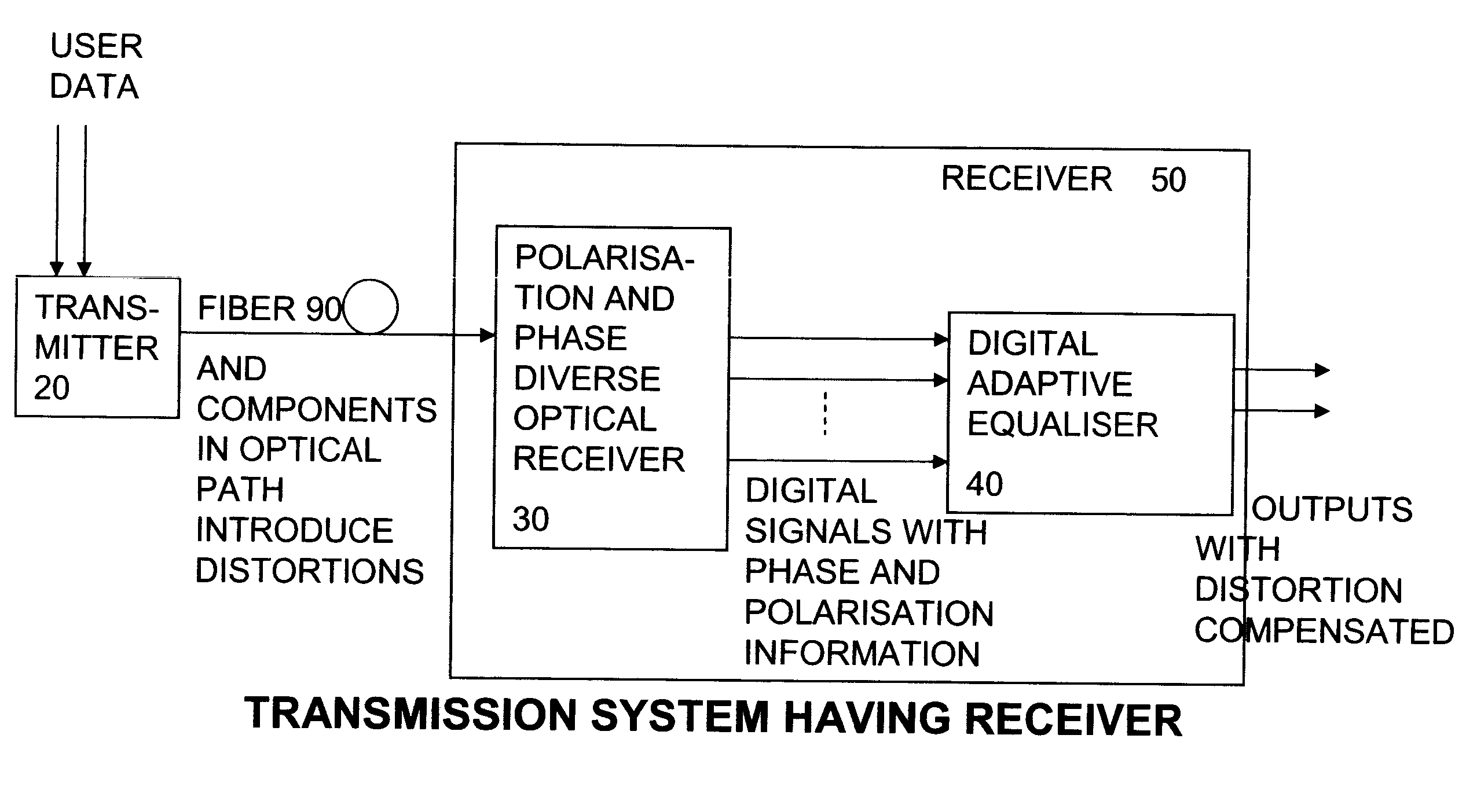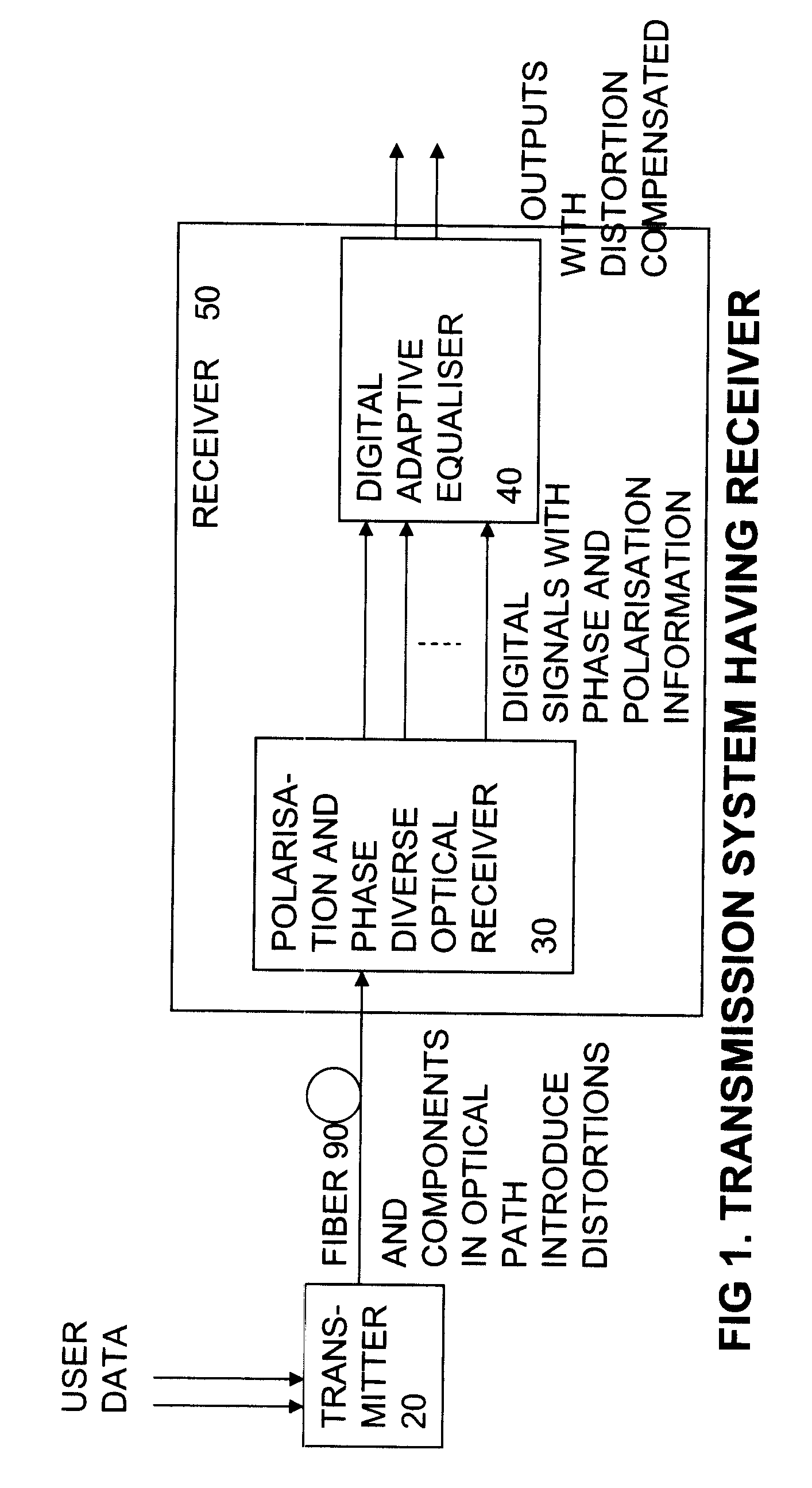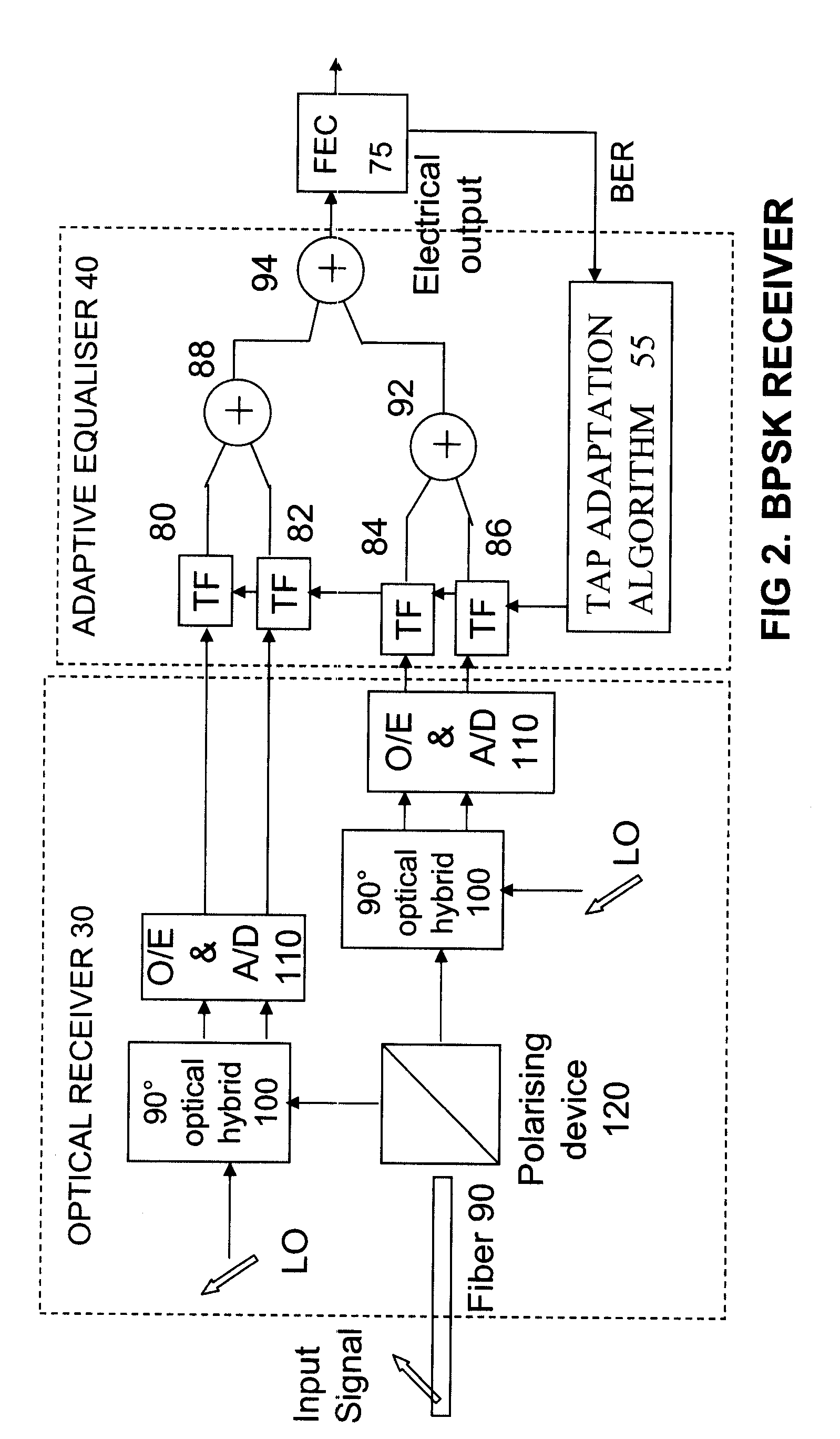Digital Compensation for Optical Transmission System
a digital compensation and optical transmission technology, applied in transmission, electromagnetic transmission, electrical equipment, etc., can solve the problems of limiting the cost/performance trade-off, many complex solutions have been tried to compensate for pmd and cd with limited success, and limiting the success of both coherent and direct detection systems in high-capacity systems. to achieve the effect of increasing the chance of successful and sufficiently rapid convergence, and taking into account non-adjustable effects more readily
- Summary
- Abstract
- Description
- Claims
- Application Information
AI Technical Summary
Benefits of technology
Problems solved by technology
Method used
Image
Examples
Embodiment Construction
[0028] Adaptive equalization is a technique known for compensating for channel distorting effects in transmission systems, using digital filters, e.g. transversal filters, maximum likelihood sequence estimators, or maximum a posteriori detectors. What is notable is the application of this with a coherent optical detector to compensate for optical distortions. Embodiments of the invention use coherent detection of an incoming optical signal to map the optical field into four electrical signals. A subsequent digital adaptive equalizer can use these signals, containing phase and polarization information, for compensation of effects such as polarization mode dispersion (PMD) and chromatic dispersion which otherwise cause an increase in the bit error rate.
[0029]FIG. 1 shows an optical transmission system using an embodiment of the invention. A transmitter 20 is shown for modulating user data onto an optical signal. This is fed along an optical path including a fiber 90, typically many k...
PUM
 Login to View More
Login to View More Abstract
Description
Claims
Application Information
 Login to View More
Login to View More - R&D
- Intellectual Property
- Life Sciences
- Materials
- Tech Scout
- Unparalleled Data Quality
- Higher Quality Content
- 60% Fewer Hallucinations
Browse by: Latest US Patents, China's latest patents, Technical Efficacy Thesaurus, Application Domain, Technology Topic, Popular Technical Reports.
© 2025 PatSnap. All rights reserved.Legal|Privacy policy|Modern Slavery Act Transparency Statement|Sitemap|About US| Contact US: help@patsnap.com



